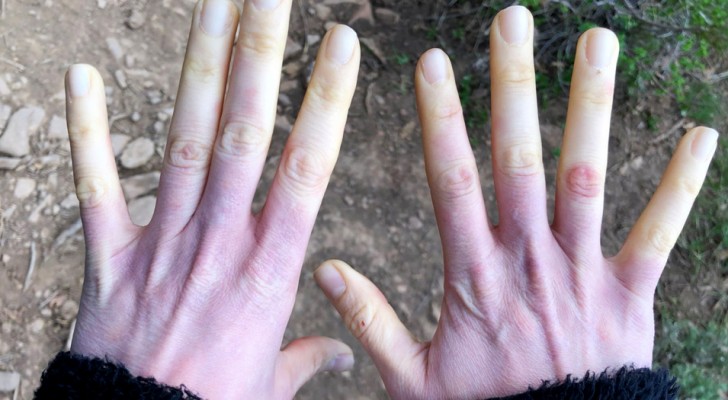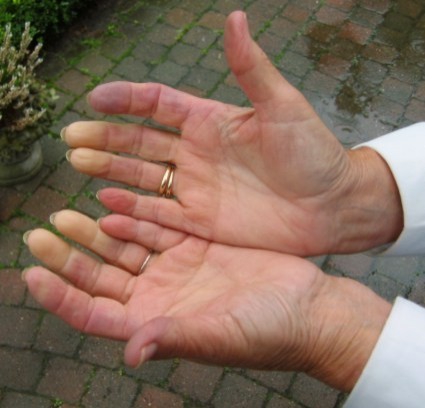If your fingers start to turn pale when cold, you may have Raynaud's syndrome

During the winter it is advisable to cover yourself adequately so as not to suffer excessively from the cold, but despite the various gloves, scarves and hats, there are still those who can't get warm enough. 5% of people suffer from a seemingly harmless but decidedly annoying syndrome, better known as Raynaud's syndrome or Raynaud's phenomenon. It is a reduction in blood flow to certain extremities of the body as a result of excessive spasming of the peripheral blood vessels. Here are the symptoms to consider and why you should see a doctor.
via Mayo clinic

Raynaud's syndrome occurs mainly in the hands - sometimes in the feet and, more rarely, in other extremities of the body such as the earlobes, nose or tongue - with an evident and reversible change in skin color. We can divide the color change into three sequential phases: a first intense pallor, then a bluish color (cyanosis) and finally redness. The change in color, which often occurs only in the first phase of intense pallor (the "incomplete" form of Raynaud's), is associated with pain and tingling that can persist for several minutes. In severe cases, the FDR can lead to the appearance of painful ulcers.
The first manifestation of Raynaud's generally occurs between 15 and 30 years: in this case, the syndrome is not usually associated with other pathologies. However, if it were to appear for the first time in old age, it could hide some pathology. For this reason it's good to investigate the nature of the phenomenon with your doctor.

To understand if a rheumatological disease is hiding behind Raynaud's syndrome, it's necessary to undergo special tests (videocapillaroscopy or percutaneous angioscopy) at a specialized rheumatology center. If you are sure you have Raynaud's it's advisable to abstain entirely from smoking, as well as trying to avoid prolonged exposure to cold, sudden changes in temperature and strong emotions such as fear, anxiety and stress.
If you have noticed that, especially during the coldest months of the year, the color of your hands tends to change in a few moments, accompanied by a persistent tingling, you may have Raynaud's syndrome. To remove any doubt and not rely on our description, always contact your doctor.





